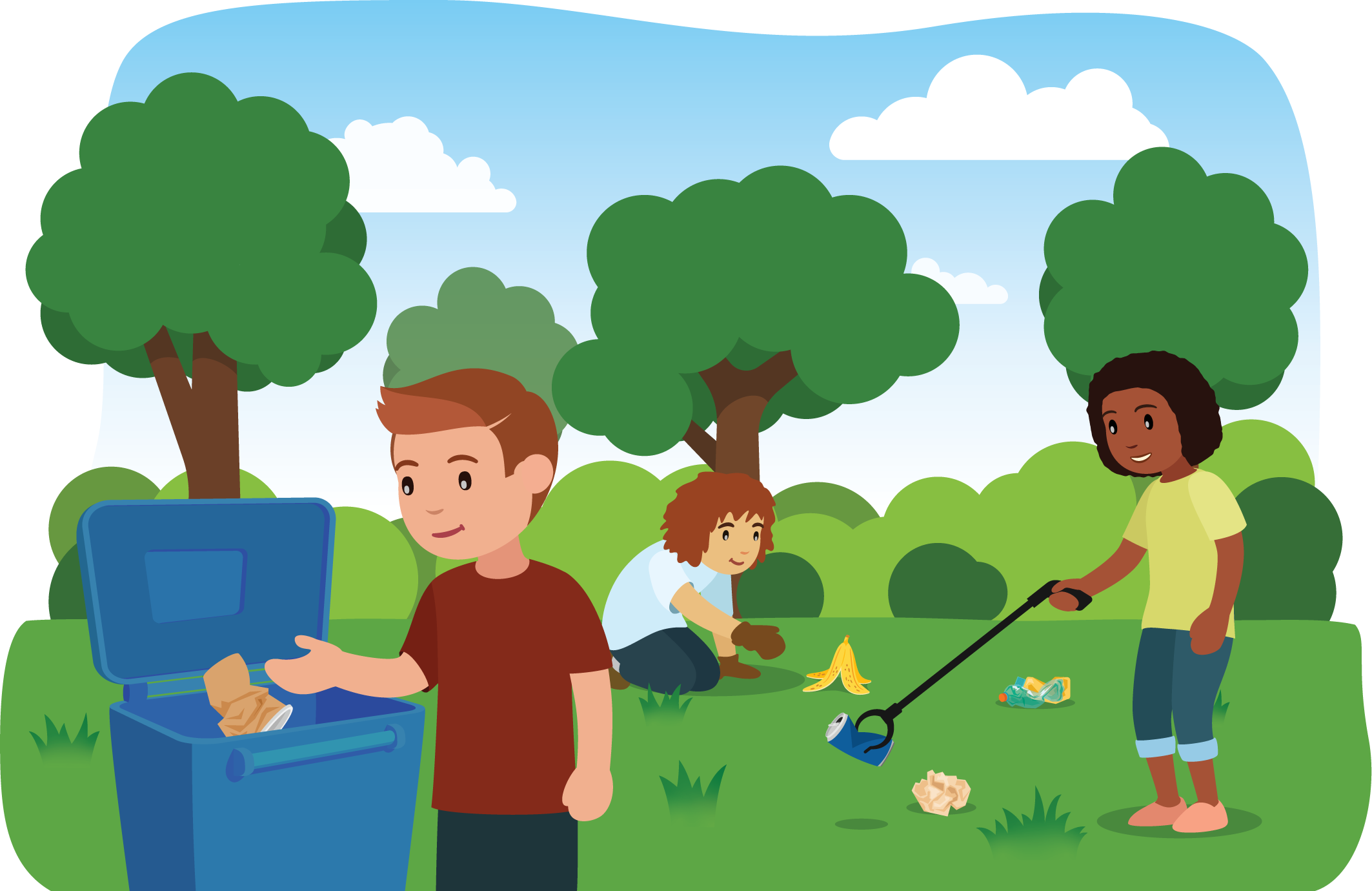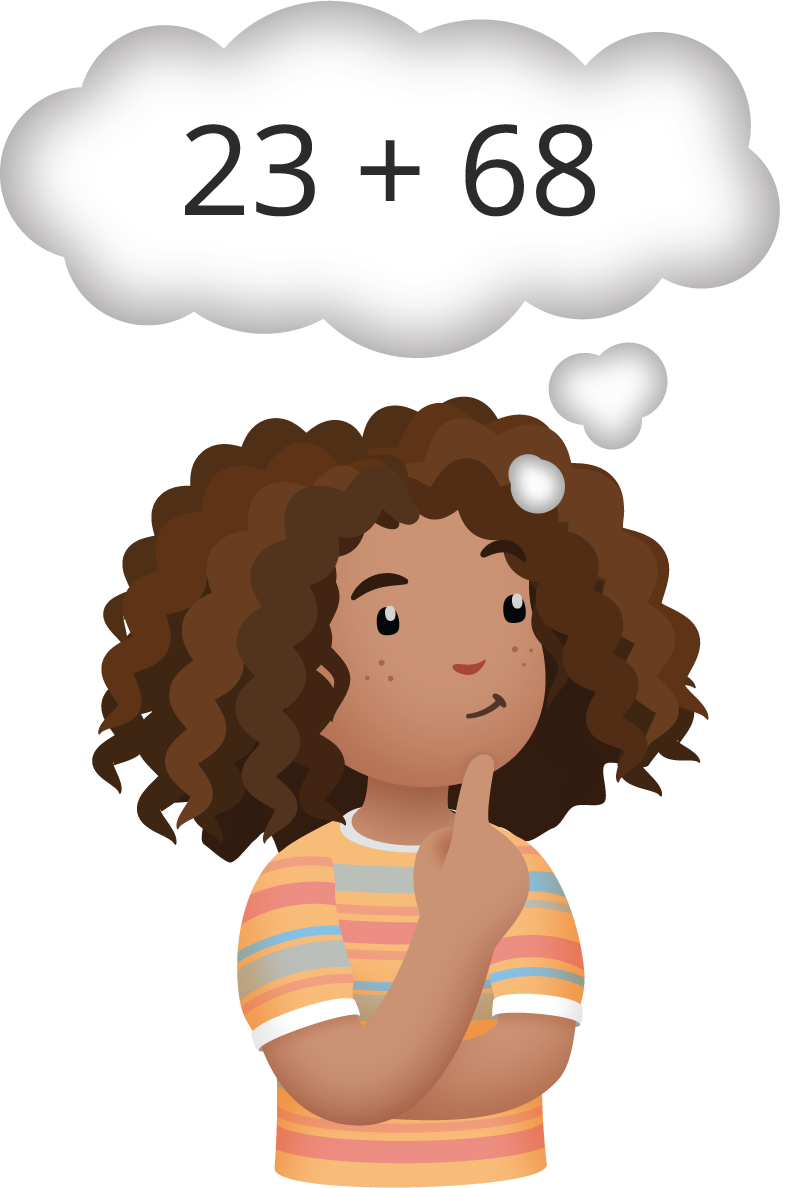Lesson 11
How Did You Do That?
Warm-up: True or False: Add to a Two-digit Number (10 minutes)
Narrative
The purpose of this True or False is to elicit strategies students have for adding within 100 using methods based on place value. As students reason about how to add the digits in the two addends, they make use of base-ten structure (MP7).
Launch
- Display one statement.
- “Give me a signal when you know whether the statement is true and can explain how you know.”
- 1 minute: quiet think time
Activity
- Share and record answers and strategy.
- Repeat with each statement.
Student Facing
Decide if each statement is true or false. Be prepared to explain your reasoning.
- \(24 + 3 = 54\)
- \(42 + 5 = 47\)
- \(42 + 30 = 45\)
Student Response
For access, consult one of our IM Certified Partners.
Activity Synthesis
- “How can you explain your answer without finding the value of both sides?”
Activity 1: How Much Litter? (15 minutes)
Narrative
The purpose of this activity is for students to interpret equations that represent different methods for addition. When students connect the quantities in the story problem to addition equations, they reason abstractly and quantitatively (MP2). Base-ten drawings are provided for Jada and Kiran's way so that students can use the drawings and the equations to make sense of the different methods. Students compare methods that add tens and tens and ones and ones to methods that add on by place. Students may also relate the methods used by Kiran and Tyler to the make 10 methods they use when adding within 20.
This activity uses MLR8 Discussion Supports. Advances: listening, speaking
Required Materials
Materials to Gather
Launch
- Groups of 2
- Give students access to connecting cubes in towers of 10 and singles.
- Display the image and story problem.
- Read the problem.
- “What is this problem about?” (Kids who are cleaning up a park. People picking up litter.)
- “What would you do to figure out how many pieces of litter they picked up?” (I would add 37 and 25.)
- “Jada, Kiran, and Tyler figure out how many pieces of litter Mai's class picked up, but they do it in different ways. With your partner, explain how each student found the value of \(37 + 25.\) Be ready to explain your thinking in a way that others will understand.”
Activity
- 5-7 minutes: partner work time
- Monitor for students who can explain each method:
- by connecting the drawings and the equations.
- by describing how the student thought about adding tens and ones.
- by describing how the student made a ten.
Student Facing

Mai and her classmates volunteer to clean up the local park.
They pick up 37 plastic bottles and 25 paper wrappers.
How many pieces of litter did they pick up all together?
Jada, Kiran, and Tyler find the value of \(37 + 25\) to find out how many pieces of litter Mai's class picked up.
\(37 + 25\)
Jada’s way:
\(30 + 20 = 50\)
\(7 + 5 = 12\)
\(50 + 12 = 62\)

Kiran’s way:
\(37 + 3 + 2 = 42\)
\(42 + 20 = 62\)

Tyler’s way:
\(37 + 20 = 57\)
\(57 + 3 + 2 = 62\)
Student Response
For access, consult one of our IM Certified Partners.
Activity Synthesis
- Invite previously identified students to share.
- “Who can restate what ____ shared in their own words?”
- 30 seconds: quiet think time
- Consider providing students time to restate what they heard to a partner before selecting one or two students to share with the class.
- Ask the original speaker if their peer was accurately able to restate their thinking.
Activity 2: It's Your Turn to Add (20 minutes)
Narrative
The purpose of this activity is for students to find the sum of 2 two-digit numbers using one of the methods students have seen in previous activities. Students choose which method they would like to use and show their thinking using drawings, numbers or words. Although students have been analyzing base-ten drawings, if they are ready to represent their addition methods with equations, they should be encouraged to do so. Students participate in a gallery walk in which they observe the different ways the addition methods can be represented.
Advances: Representing, Conversing
Supports accessibility for: Social-Emotional Functioning, Attention
Required Materials
Materials to Gather
Launch
- Groups of 2
- Give each group tools for creating a visual display and access to connecting cubes in towers of 10 and singles.
- “You are going to find the value of \(23 + 68\) with your partner. Choose one of the methods from the previous activity and work together to use it to find the value. Show your thinking using drawings, numbers, or words. Come to an agreement about the steps you will use and how you will represent them.”
- 3 minutes: partner discussion
Activity
- “Create a visual display that shows how you and your partner found the value of \(23 + 68\). You may want to include drawings and numbers to help others understand your thinking.”
- 5-7 minutes: partner work time
Student Facing
Find the value of \(23 + 68\).
Show your thinking using drawings, numbers, or words.
If you have time: Think about a math story this expression could represent.
Share your stories with a partner.

Student Response
For access, consult one of our IM Certified Partners.
Activity Synthesis
- “With your partner, look at the posters and talk about what you notice. Do any of the posters show Jada's, Kiran's, or Tyler's method? How do you know?”
- 6 minutes: gallery walk
Lesson Synthesis
Lesson Synthesis
“In a previous lesson, we broke apart both two-digit numbers and added the tens and tens and ones and ones. Today we broke apart two-digit numbers in different ways. We looked for ways to make a new ten and ways to add on tens and ones. Which method do you prefer? Why do you like that method better?”
Invite students to share responses to the cool-down.
Cool-down: Which Method Do You Like? (5 minutes)
Cool-Down
For access, consult one of our IM Certified Partners.